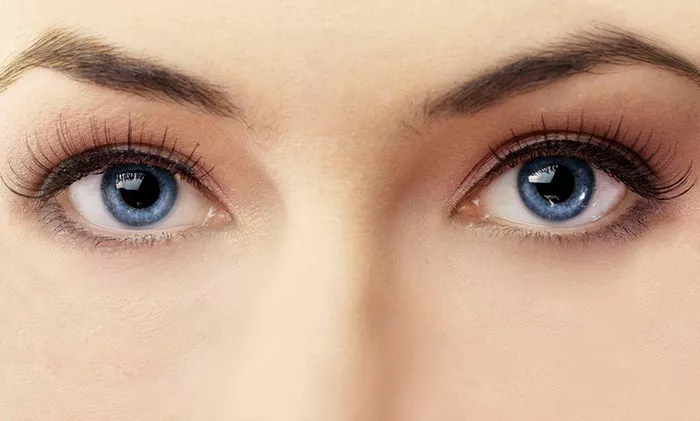Upper blepharoplasty, also known as an upper eyelid lift, is a surgical procedure performed to rejuvenate the appearance of the upper eyelids by removing excess skin, fat, and muscle. It is a popular cosmetic surgery option for individuals seeking to address sagging or drooping eyelids that can make them look tired or aged. One common concern among those considering upper blepharoplasty is whether the procedure is painful. In this article, we will explore the level of discomfort associated with upper blepharoplasty and the recovery process.
The Surgical Process
Before diving into the level of pain associated with upper blepharoplasty, it is important to understand the surgical process itself. Upper blepharoplasty is typically performed under local anesthesia, which numbs the area around the eyes. Some surgeons may also offer sedation to help patients feel more relaxed during the procedure.
During the surgery, incisions are made in the natural creases of the upper eyelids to minimize visible scarring. Excess skin, fat, and muscle are carefully removed or repositioned to create a more youthful and refreshed appearance. The incisions are then closed with sutures, which are typically removed within one week.
Level of Discomfort
While upper blepharoplasty is a surgical procedure, most patients report minimal pain or discomfort during and after the surgery. This is due to the use of local anesthesia and the relatively small incisions made in the eyelid creases. The anesthesia ensures that the surgical area is numb, reducing the sensation of pain during the procedure.
During the surgery, you may feel some pressure or tugging sensations as the surgeon works on the eyelids. However, these sensations are generally well-tolerated and do not cause significant discomfort. Your surgeon will communicate with you throughout the procedure to ensure your comfort.
Post-Operative Discomfort
After the surgery, it is common to experience some post-operative discomfort. This discomfort is usually mild and can be managed effectively with over-the-counter pain medication or prescribed pain relievers provided by your surgeon.
The level of post-operative discomfort varies from person to person and depends on factors such as pain tolerance, individual healing capacity, and the extent of the surgery. Some common sensations that patients may experience after upper blepharoplasty include:
- Swelling: Swelling around the eyelids is a normal part of the healing process. It usually peaks within the first few days after surgery and gradually subsides over the following weeks.
- Bruising: Bruising around the surgical area is common and may appear as black and blue discoloration. The extent of bruising varies among individuals and typically resolves within one to two weeks.
- Tightness or Tension: Some patients may experience a sensation of tightness or tension in the upper eyelids. This is a normal part of the healing process and is often alleviated as swelling subsides.
- Dryness or Irritation: Your eyes may feel dry or slightly irritated after the surgery. Your surgeon may recommend the use of lubricating eye drops or ointments to provide relief.
- Sensitivity to Light: It is normal to experience temporary sensitivity to light or glare after upper blepharoplasty. Wearing sunglasses when outdoors can help alleviate this discomfort.
It’s important to note that while discomfort is a part of the recovery process, it is usually manageable and temporary. Most patients find that any discomfort they experience diminishes significantly within the first week after surgery.
Recovery Process
The recovery process for upper blepharoplasty is generally smooth, and most individuals are able to resume their normal activities within a week or two. Your surgeon will provide you with specific post-operative instructions to ensure a successful recovery. These may include:
- Applying cold compresses or ice packs to the surgical area to minimize swelling and bruising.
- Keeping the head elevated during sleep to reduce swelling.
- Avoiding activities that can strain the eyes, such as reading or watching screens for extended periods.
- Using prescribed ointments or drops to promote healing and alleviate dryness.
- Avoiding strenuous activities, heavy lifting, and bending over for a few weeks.
Follow-up appointments with your surgeon will be scheduled to monitor your progress and remove any sutures.
Conclusion
While upper blepharoplasty is a surgical procedure, most patients report minimal pain or discomfort during and after the surgery. The use of local anesthesia and the small incisions made in the eyelid creases contribute to a relatively comfortable experience. The post-operative discomfort typically consists of mild swelling, bruising, tightness, and dryness, which can be managed with pain medication and proper care. With proper post-operative care and adherence to your surgeon’s instructions, the discomfort associated with upper blepharoplasty is usually temporary and subsides within a week or two. If you have any concerns or questions about the procedure or recovery process, consult with a qualified plastic surgeon who can provide you with personalized guidance and support.

